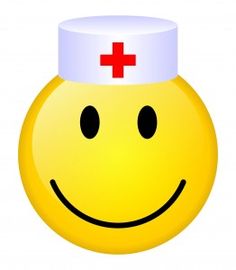Paper-Evaluation Of Health Information On The Internet
N434 Grading Rubrics
Rubric: Paper–Evaluation of Health Information on the Internet
Paper: Evaluation of Health Information on the Internet Grading Rubric
Points Earned
Exceeds Expectations
Meets Expectations
Does Not Meet Expectation
Introduction—
Explanation of
Issues
4
Each definition and descriptions of the scope, impact, and nursing role related to health literacy are clear, concise, comprehensive including references for each, and fully supported by evidence (4 points)
Definition and descriptions of
the scope, impact, and nursing role related to health literacy are clear, concise, and partially supported by evidence; understanding is not seriously impeded by omissions.
(3.5 points)
Definition and description
of the scope, impact of health literacy and/or nurses’ roles are stated without clarification, description, or clear evidence. (3 points)
Description of the health-related Internet resource
(website)
3
Identification of the URL for the website home page is accurate; selection of website is reasonable; description of the website is clear, concise, and includes relevant factual information (3 points).
Identification of the URL for
the website home page is accurate; selection of website is reasonable; description of the website is concise but some relevant information is omitted or unclear. (2.5 points)
Identification of the URL
for the website home page is inaccurate or missing; reasons for selection of website is not mentioned; description of the website is unclear or incomplete. (2 points)
Evaluation of website
9
Evaluation addresses all of the categories and criteria from the NLM tutorial and is supported by specific examples from the website. Critical appraisal of the website is clear, concise, and organized and based on accurate, factual information (9 points).
Evaluation addresses most of
the categories and criteria from the NLM tutorial. Support for evaluation (factual examples from the website) is not consistently or clearly provided. Appraisal of website is generally clear and accurate and is supported with some accurate, factual information. (7 points).
Evaluation does not address criteria from 2 or more of the categories in the NLM tutorial. Examples from the website to support the evaluation are not included and/or are not accurate or are based on opinion rather than factual information. (5 points)
Summary: Strengths,
Limitations, Implications, and Conclusions
6
Synthesis of strengths and
limitations of the website in
relation to the website’s use by patients is based on the evaluation. Potential areas of concern and/or unintended consequences related to using this website for patient education are clearly described. At least 2 specific recommendations (and rationale) for improvement of the website (including evidence) are included (6 points)
Summary of strengths and
limitations of the website in relation to use by patients is based on the evaluation.
Potential areas of concern and/or unintended consequences related to using this website for patient education are identified. One recommendation for improvement of the website is included. Recommendations were provided without evidence. (4.5 points)
Strengths, limitations and areas of concern/ unintended consequences of website use for patient education are incongruent with the website evaluation. No improvements of the website are recommended. (3 points)
Writing & APA
Format
3
Writing is clear, organized and logical. Uses APA 6th edition and
required headings throughout (0-3 APA errors). Uses correct grammar, spelling and punctuation with only 1-3 errors (3 points)
Writing is generally clear and organized. Uses APA 6th
edition and some of the required headings (4-7 APA errors). Uses correct grammar, spelling and punctuation with 4-9 errors. (2.5 points)
Writing is unclear and
disorganized. Does not meet minimum page number or exceeds maximum page number. Does not use APA 6th edition and/or required headings (more than 8 APA errors). Grammar, spelling and punctuation are distracting to the reader and impair conveyance of ideas (10 or more errors.) (2 points)
Total Points out of
25 possible:
25
25 points
20 points
˂ 19.75 points
Adapted with permission from Assessing outcomes and improving achievement: Tips and tools for using rubrics, edited by Terrel L.
Rhodes. Copyright 2010 by the Association of American Colleges and Universities.
Do you need a similar assignment done for you from scratch? We have qualified writers to help you. We assure you an A+ quality paper that is free from plagiarism. Order now for an Amazing Discount!Use Discount Code “Newclient” for a 15% Discount!NB: We do not resell papers. Upon ordering, we do an original paper exclusively for you.
“Are you looking for this answer? We can Help click Order Now”







